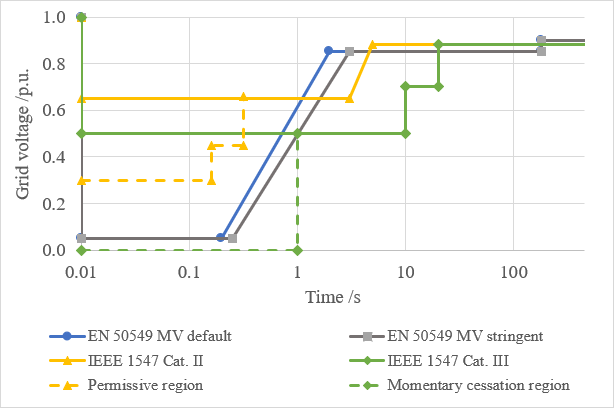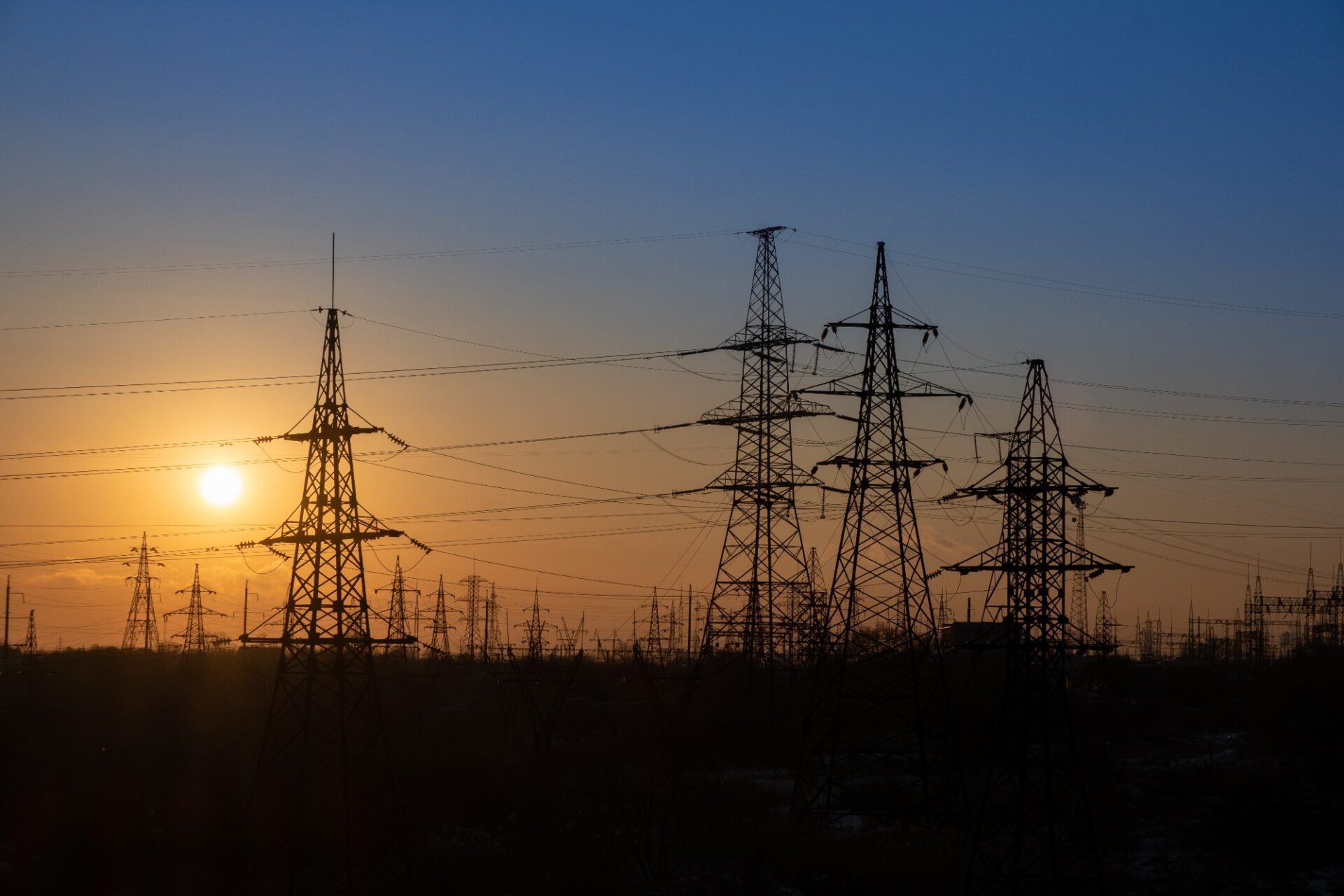This is to ensure that the grid can continue to operate in a stable and safe manner, which our society has become so dependent on. In addition to being stable, the operation of the grid should not be disturbed by new users in such a way that the service to existing customers is seriously affected.
What are grid codes and why are they important?
The name ‘grid code’ refers to documents, typically issued by the country or region’s transmission system operator, that specify the required behaviour and performance of a generator plant connected to the electrical grid.
Requirements found in grid codes are a collection of best practices, research and gained experience on how generators should behave to ensure a stable and reliable operation of the electrical grid that can handle contingencies such as the daily changes in usage, planned maintenance events, failures, short circuits incidents. A generator plant will have to comply to the requirements in the grid codes to be allowed to be connected and deliver power to the electrical grid.
All grid code requirements are evaluated in a single point of connection, usually designated as the point of common coupling, or just point of coupling. Hence, grid codes are less concerned with whether a plant consists of a single generator unit or as an array of smaller units. What is important is that the total plant has a behaviour that is beneficial for the operation of grid it is connected to. For a wave power plant, this point of common coupling will likely be the onshore grid connection point, and wave power plants are expected to fulfil grid code requirements just as other distributed energy resources.
Hence, the contractual agreement between a power plant operator and the grid operator are evaluated in this point of common coupling. As such, grid codes contain no requirements for performance or tests for the subsystems or interactions within a power plant. However, just because there are no requirements for the internal structure of wave energy converter, its behaviour and protective systems, does not mean that it shouldn’t be tested.
The test rig under development in the IMPACT project will test both formal and informal requirements for safe, stable and reliable performance of wave energy converters.
Relevant grid codes for wave energy converters
The status quo is always challenged when new technology is introduced. When wind and solar power were introduced to the central electrical grid, they were given less stringent requirements for connection. Naturally, the grid codes developed when wind and solar power increased in power level and they started to affect the normal grid operation. Specific grid codes were developed in many countries that targeted specifically these new renewable energy sources (RES). Since there are few installed wave power plants today, there are no specific grid codes developed for them.
However, there is another megatrend that is affecting what grid code requirements will be applicable to a new wave power plant. Increasing standardisation and harmonisation of grid requirements has led grid companies and international organisations to develop grid codes and standards that are more general and less specific to each type of primary energy source. Most renewable energy sources are interfaced to the grid using power electronic converters, so some generality is achieved. The fluctuating nature of RES means that all connected generators must be more resilient to changes and contingencies, as so the performance criteria are made more stringent. Furthermore, more general grid codes will result in the same strict criteria being applied regardless of the energy source.
As part of the IMPACT project, two relevant grid codes derived standards for connecting renewable energy sources to a medium voltage grid were reviewed – EN 50549 and IEEE 1547. In either standard, any generator with a power electronic grid interface will see almost identical requirements regardless of the type of renewable energy source it is producing from. As such, developers of wave power plants can have a fairly clear idea of what requirements will be put forward by the grid operator.
Moreover, the wave power plant developers can benefit from buying fairly standard power electronic converters for the grid connection with limited modifications, benefitting from the experience and knowhow built from the development of wind and solar power over the years.
Different grid codes for different regions, but how different?
Just as the needs and requirements for products in different regions will depend on the local differences, e.g., humid and hot countries around equator compared to cold and dry environments in the North, the same can be said for grid codes.
The transmission operators of Europe have agreed on a common set of high-level grid codes for the European region in an attempt to harmonise the rules such that the connection process can be simplified and cheaper. With increasing power level of the planned generator to be connected to the grid, there will more stringent criteria for the generator behaviour and performance. The stringency is labelled from Type A to Type D where the latter is most stringent.
However, different regions inside Europe will have different thresholds for what type criteria the generator is designated. For example, while the Type B threshold for continental Europe is 1 MW, the threshold is lowered ten times to 0.1 MW when connection is made in Ireland or Northern Ireland. Typically, an island grid is more vulnerable to contingencies, disturbances, and load changes, and, hence, the requirements for the generators will be stricter to ensure that the electrical grid can have stable and reliable operation.
Yet, how large are the differences in grid codes across continents? The standards EN 50549 and IEEE 1547 are grid code derived standards for such connections for Europa and America, or 50 and 60 Hz grid systems, respectively. In general, there are many similarities in the type of requirements, however there can be slight differences in performance values.
An example is given of the low-voltage ride-through requirements for generators. Low-voltage ride-through is a requirement that generators are able to stay connected to the grid despite of short-term faults occurring. A typical fault would be a tree falling over a transmission line some distance away, resulting in a short-circuit. The voltage at the generator terminals will have a quick drop until the faulty line is automatically disconnected and normal voltage levels are again restored. The generator should stay connected in case of such a dip in voltage, if not the grid would have a black-out every time a short-circuit occurs.
A comparison of the voltage dip envelope that the generator must withstand is compared for the two standards. Similarities are seen, although the timeline is slightly different. A generator manufacturer must take these slight differences into account when designing and testing their equipment so that it is compliant to operate in the intended region.

Effect of having an array of wave energy converters
While the current power level of WECs, either scaled or full rated sizes, are usually below 1 MW, it will be natural to install more than one unit in an array for each power plant. Consequently, the expected rating of a near future WEC plant would be up to several tens of MW. From the grid code point of view, it is the power level as seen from the point of common coupling, i.e., the total connected power plant power, that is evaluated and not each unit separately.
As the grid code requirements can be dependent on the power level as discussed for the European region, the array size and placement can affect the stringency of the connection requirements. However, there can be some advantages from the array operation as well.
One such advantage is regarding a power quality requirement called flicker. Flicker can occur due to a fluctuating power production or consumption with a frequency in the visible region, typically in the range from 25 Hz to 0.1 Hz. The power output of the WEC will oscillate with the incoming waves, and there could be a risk that a WEC will introduce elevated flicker levels. However, as more WECs are placed in an array, the spatial distribution of units will lead to temporal shifts in their production, effectively levelling out the power production profile.
Grid codes and IMPACT
Grid codes are a set of requirements that must be fulfilled to able to connect the generator or power plant to the grid. Hence, the equipment should be tested for such conditions. However, since grid codes only consider what happens at the point of common coupling, the list of requirements and tests in grid codes are non-exhaustive.
The IMPACT test rig will be designed to help WEC developers to verify their equipment towards formal requirements, test the reliability of the device in case of contingencies and accelerate the development process and de-risk the WEC project development.








Comments
No comments yet. Be the first to comment!